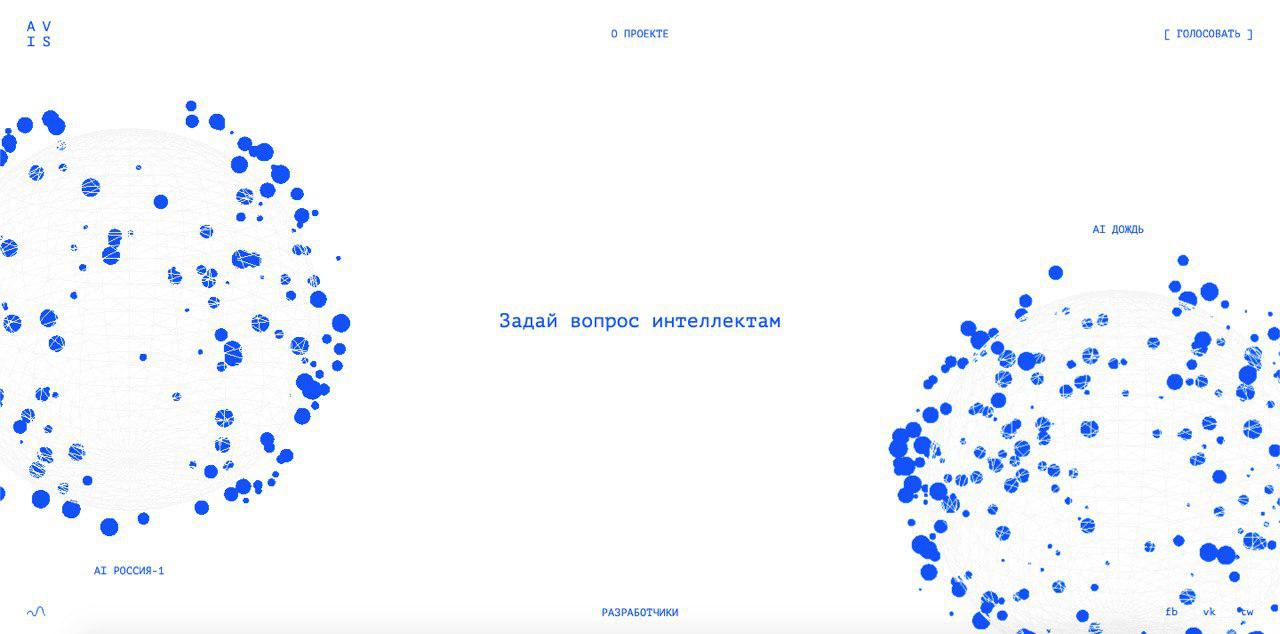The media landscape of Russia is monopolized by the government. Russia-1 channel – the key figure in this monopoly – uses propaganda techniques to influence the worldviews of Russians. TV Rain on the contrary is the only independent liberal media that gives its audience many different perspectives on life in Russia and abroad.
To demonstrate a subtle difference between the news on both channels and how they affect people worldviews we created two pristine AIs. They were like twin kids who didn’t know anything about this world and had no life experience. Their minds were pure, so we brought them up on the news programs of Russia-1 and TV Rain channels respectively. In six month each AI had its own worldview formed through the lens of the media it was watching. The differences in their worldviews and vocabularies proved one thing. We really are what we watch.
Our main challenge was to build a pristine AI without a huge dataset it could have been trained with. Although, AI creation usually requires gigabytes of data, while we had only six months of daily TV news programs at our disposal. So we had to find a new approach for this task. Experimenting with different solutions, we came up with the combination of various neural networks. It includes several key technologies: Google word embedding technology word2vec (a neural network trained to reconstruct linguistic context of words), a Microsoft R-NET neural network (neural network model for reading comprehension style question answering, answers questions from a given passage) and the state-of-art neural network algorithms for speech recognition, Google Speech-to-Text. A combination of different neural networks allowed us to structure the incoming data from TV channels into the multidimensional vector space of AI ‘brain’ and find the most relevant answer to user questions in it.

